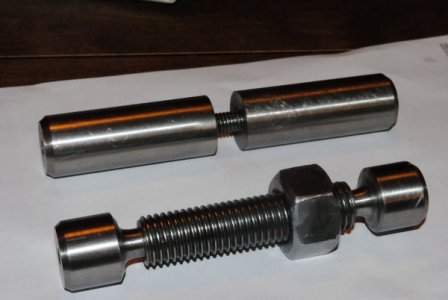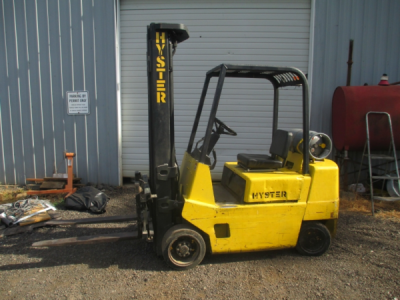-
Welcome back Guest! Did you know you can mentor other members here at H-M? If not, please check out our Relaunch of Hobby Machinist Mentoring Program!
You are using an out of date browser. It may not display this or other websites correctly.
You should upgrade or use an alternative browser.
You should upgrade or use an alternative browser.
Finding or making 15 foot long acme threaded rods ...
- Thread starter arvidj
- Start date
Also a 180" X 1" diameter acme lead screw would develop a good deal of twist at the far end when rotated under load, a ball screw would be a far better choice for such an application, nearly zero friction.
Thanks for the thought but a quick look at the costs associated with a pair of 15 foot long ball screws puts it far outside my budget. Four digit numbers for just one screw in the cases where I could find anything long enough to work while a 12 foot long acme from McMaster is only about $63.
This company ... Ram Manufacturing ... seems to have been successful using acme screws in their commercial lift applications, to the point where they actually provide some justification for their choice of acme over ball screws.
Arvidj
This elevator is just for moving material only, correct?
This is similar to a question from my wife
The only answer I can provide without taking this thread down the safety nazi rabbit hole [which is where similar threads have gone and is not relevant to the specific question presented] is 'Yes, materials only'.
- Joined
- Sep 29, 2014
- Messages
- 2,102
I just read the document from Ram Manufacturing, the idea there is CHEAPER then everyone else.Thanks for the thought but a quick look at the costs associated with a pair of 15 foot long ball screws puts it far outside my budget. Four digit numbers for just one screw in the cases where I could find anything long enough to work while a 12 foot long acme from McMaster is only about $63.
This company ... Ram Manufacturing ... seems to have been successful using acme screws in their commercial lift applications, to the point where they actually provide some justification for their choice of acme over ball screws.
Yes ballscrews will back drive and require a brake. Most all commercial traction elevators also require one or more brakes, also a governor in the event that it overspeeds either up or down.
Old elevator controls are truly fascinating to watch in operation, simple relay logic top to bottom.
- Joined
- May 10, 2017
- Messages
- 1,199
Yes ballscrews will back drive and require a brake. Most all commercial traction elevators also require one or more brakes, also a governor in the event that it overspeeds either up or down.
Old elevator controls are truly fascinating to watch in operation, simple relay logic top to bottom.
Ahh, something I can relate to. You could often times troubleshoot the old relay controls just by listening to the sequence of the relays picking and dropping. I miss the old relay logic stuff.
- Joined
- Dec 31, 2010
- Messages
- 937
Off the wall I would look at a 2 drum winch system with an equilizer bar between the ends. If one cable broke the bar could be mounted so that stops for either end would hold the elevator. Obviously all components must be sized according to OSHA, MSHA or local safety standards.
Have a good day
Ray
Have a good day
Ray
You might consider looking at a car lift type arrangement. You haven't said what the load would be, but my 4 post will raise 9000lbs about 6'. Runs with a long cylinder and cables. The cable break is covered with lock lugs welded into guide channels every 6-8 inches. You probably need less lift capability and more lift height, but that can be gotten by changing some geometry with pulleys. Another approach might be to use an electric winch, and the car lift channel with lugs arrangement, as a substitute for a long hydraulic cylinder.
- Joined
- Apr 8, 2013
- Messages
- 1,982
A simple way to make the long leadscrew you want is to build it in 3 foot sections. You can make it as long as you want and never have to deal with a section more than 6 feet long. Of course, if six feet is too much to handle you can use any length sections and deal with nothing longer than twice the length you choose. They can be joined by the the same method used in the captured nut puzzle only on a larger scale. The method used is to attach 2 sections together via internal threads and THEN thread the OD so the threads line up. Take the joint apart, add the next section and repeat as many times as you need for total length. When it's all done , reassemble with red locktite. In the picture below, the joint between the sections is exposed but undetectable and the nut traverses it smooth as glass.


Last edited:



